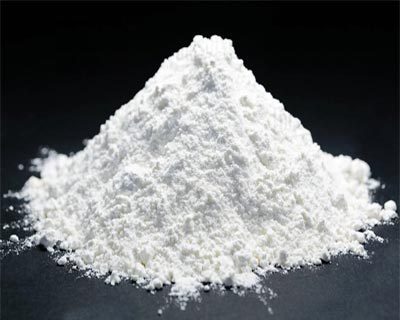Calcium carbonate is a chemical compound and calcium salt with the formula CaCO3. It is a common substance found in rocks comprises more than 4% of the earth’s crust as white, odorless and tasteless powder or colorless crystals. Its most common natural forms as the minerals sedimentary rocks are chalk, limestone, marble, calcite, aragonite and limestone. Calcium carbonate produced by the sedimentation of the shells of small fossilized snails, shellfish, coral and hermodynamically stable form under normal conditions is the mineral calcite. Practically insoluble in water and is created when calcium ions in hard water react with carbonate ions. The main uses of calcium carbonate are in the metallurgy, construction, chemical and industrial uses, environmental uses, animal feed, agriculture, pharmaceutical and foods.
Structure and Occurrence
Calcium carbonate forms can be hexagonal β-CaCO3 or denser form orthorhombic λ-CaCO3 and hexagonal μ-CaCO3. Calcium carbonate Prepared in shallow water world-wide where shelled organisms thrived where sunlight and filterable food are more abundant than towards the poles where the waters are cold. CaCO3 makes a unique reaction with acids and produces CO2. This phenomenon is important to the formation of caves. Stalactite and stalagmite formationsin in caves created by water drips containing CaCO3 where carbon dioxide can be released in an extremely long process takes place over many thousands of years.
Calcite, limestone, chalk, marble, travertine, aragonite and vaterite are calcium carbonate mineral sources. Eggshells, snail shells and most seashells are Biological sources of CaCO3.
| Chemical Properties | |
| CaCO3 | Chemical formula |
| odorless, tasteless powder or crystal, chalky taste | Appearance |
| 100.0869 g/mol | Molar mass |
| 2.711 g/cm3 (calcite) | Density |
| 2.711 g/cm3 (calcite)
2.83 g/cm3 (aragonite) |
Density |
| 9.0 | pH |
| in water: 0.013 g/L (25 °C)
in dilute acids: soluble insoluble in alcohol |
Solubility |
| Trigonal | Crystal structure |
| decomposes | if Boiling |
| 1517 to 2442 °F (Decomposes) | Melting Point |
| 5 | Heavy Atom Count |
Preparation
Calcium carbonate results directly from the mining of limestone and is extracted by mining or quarrying. Pure calcium carbonate used as an antacid and a food and pharmaceutical additive, can be produced from a pure quarried source such as marble or it can be prepared by passing CO2 into a solution of hydrated lime (produced from quicklime. Water is added to give hydrated lime then CO2 is passed through this solution to precipitate the desired calcium carbonate) known asprecipitated calcium carbonate.
CaO + H2O → Ca(OH)2
Ca(OH)2 + CO2 → CaCO3 + H2O
precipitated calcium carbonate or PCC has a very fine and controlled particle size. it is purer than organic calcium carbonate and has different properties.
reactions
reacting with acid results releasing carbon dioxide to make carbonic acid:
CaCO3 + 2H+ → Ca2+ + CO2 + H2O
also Calcium carbonate upon heating releases CO2 to form quicklime by thermal decomposition reaction commonly called calcination:
CaCO3 → CaO + CO2
water that is saturated with carbon dioxide will react with Calcium carbonate to form the soluble calcium bicarbonate. This reaction is important leads to hard water:
CaCO3 + CO2 + H2O → Ca(HCO3)2
Industrial uses
In building materials and construction is important both as a building material and as an ingredient of cement. it is the starting material for the preparation of builders’ lime and a raw primary substance for building materials. It used to the making of mortar used in bricks installation and making concrete blocks, tiles and glass.
calcium carbonate in drilling fluids is used as a formation-bridging and filtercake-sealing agent and to increasing the density of drilling fluids and in flue gas desulfurisation applications to eliminate emissions from hydrocarbons.
CaCO3 is used to Purify iron ore in blast furnace and basic oxygen furnace to form slag and the trapping of impurities and separates easily from melted iron.
Fine GCC and PCC are used in paper mills as a filler material because they are cheaper than wood fiber in the alkaline papermaking process. Now a days paper can contain 10–20% calcium carbonate and it is dominant over other papermaking filler materials. it allows for the paper to be bright and smooth.
Fine CaCO3 is widely used as an extender, an agent to either reduce or enhance gloss, an spacer for titanium dioxide, a rheology modifier and as a paint and coating additive to densify paints and coatings. typically 30% by weight of matte emulsion paint is calcium carbonate.
It is also a popular filler in uPVC profile and other plastics such as PVC cables and Polypropylene compounds to improve mechanical and electrical properties and to increase rigidity to improve volume resistivity at high usage temperatures.
CaCO3 is the active ingredient in agricultural lime used as a effective alkaline substance for neutralising acidic soil.
Therapeutic and Pharmacology uses
Calcium carbonate is used as an antacid in gastric hyperacidity for temporary relief of indigestion, gastric antacid and phosphate binder for the treatment of hyperphosphatemia.
It is also used as an effective filler for tablets and other pharmaceuticals, toothpaste, baking powder, dough, and wine. calcium carbonate as a food additive is used as an acidity regulator, anticaking agent, stabilizer or color, in soy milk and almond milk products as a source of organic calcium.
Solubility
Calcium carbonate is Practically insoluble in pure water and in alcohol. but dissolves with effervescence in diluted acids and in water contains ammunium salt or carbon dioxide. The equilibrium of dissolved calcium carbonate is:
CaCO3 ⇌ Ca2+ + CO32-
Calcium carbonate Solubility is varying at Different levels of pH, temperature and salinity. also Solubility in a strong or weak acid solution is different.
